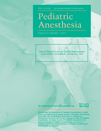Implementation of a transfusion algorithm to reduce blood product utilization in pediatric cardiac surgery
Summary
Aim
The goal of this project is to measure the impact of standardization of transfusion practice on blood product utilization and postoperative bleeding in pediatric cardiac surgery patients.
Background
Transfusion is common following cardiopulmonary bypass (CPB) in children and is associated with increased mortality, infection, and duration of mechanical ventilation. Transfusion in pediatric cardiac surgery is often based on clinical judgment rather than objective data. Although objective transfusion algorithms have demonstrated efficacy for reducing transfusion in adult cardiac surgery, such algorithms have not been applied in the pediatric setting.
Methods
This quality improvement effort was designed to reduce blood product utilization in pediatric cardiac surgery using a blood product transfusion algorithm. We implemented an evidence-based transfusion protocol in January 2011 and monitored the impact of this algorithm on blood product utilization, chest tube output during the first 12 h of intensive care unit (ICU) admission, and predischarge mortality.
Results
When compared with the 12 months preceding implementation, blood utilization per case in the operating room odds ratio (OR) for the 11 months following implementation decreased by 66% for red cells (P = 0.001) and 86% for cryoprecipitate (P < 0.001). Blood utilization during the first 12 h of ICU did not increase during this time and actually decreased 56% for plasma (P = 0.006) and 41% for red cells (P = 0.031), indicating that the decrease in OR transfusion did not shift the transfusion burden to the ICU. Postoperative bleeding, as measured by chest tube output in the first 12 ICU hours, did not increase following implementation of the algorithm. Monthly surgical volume did not change significantly following implementation of the algorithm (P = 0.477). In a logistic regression model for predischarge mortality among the nontransplant patients, after accounting for surgical severity and duration of CPB, use of the transfusion algorithm was associated with a 0.247 relative risk of mortality (P = 0.013).
Conclusions
These results indicate that introduction of an objective transfusion algorithm in pediatric cardiac surgery significantly reduces perioperative blood product utilization and mortality, without increasing postoperative chest tube losses.




